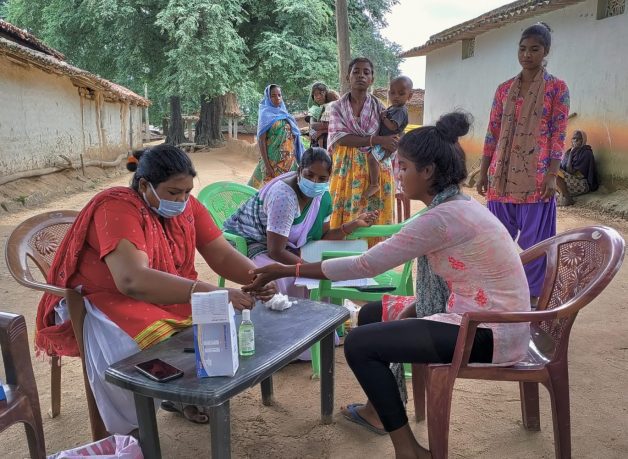
1 billion doses down
In nine months one billion doses of the COVID-19 vaccines are taken – a feat that would not be possible without the development community mobilising local influencers to help get the job done.

In nine months one billion doses of the COVID-19 vaccines are taken – a feat that would not be possible without the development community mobilising local influencers to help get the job done.
After a slow and shaky start to its COVID-19 vaccination drive, India reached the major milestone of administering one billion doses of the vaccine.
“India scripts history,” Prime Minister Narendra Modi said on Twitter. “We are witnessing the triumph of Indian science, enterprise and collective spirit of (1.3 billion) Indians.”
This massive feat would not have been possible without the work of India’s development community, which was pivotal in helping reach the country’s most remote and marginalised people.
“This has been a one-of-a-kind, different experience,” said Aliva Das, a senior manager with the Transform Rural India Foundation (TRIF), which helped mobilise local influencers in Jharkhand and Uttar Pradesh. “We were able to leverage the trust we had built up with communities already – after years of working with them.”
The inoculation campaign started slowly in the middle of January when most of India seemed to feel the worst of the pandemic was over. But the second wave hit hard with infections rising fast and furiously throughout the country. In April and May more than 400,000 people per day were infected with the virus and 4,000 were reported to have died from it as the country’s health infrastructure was overwhelmed.
But now, nine months after the vaccination drive began, India has covered three-quarters of its 944 million adults receiving their first shot and 31% having received two jabs.
Overcoming vaccine hesitancy
This was no simple task in a country with many people living in remote pockets and marginalised communities cut off from communication and health networks.
Vaccine hesitancy was another hurdle to jump as erroneous rumours about the effects of the vaccine had spread wildly in the early days.
Many people believed the vaccine would make them impotent and would shorten their life. Some felt that the vaccination drive was a means for population control. And several people in tribal pockets believed that they did not need a vaccine as they lived in a natural environment and that – if they did become infected – their herbs and medicinal plants would cure them.
“The vaccination process seemed to be impossible initially,” said Bandana Devi, team coordinator with PRADAN (Professional Assistance for Development Action). “There were many myths – fear of becoming infertile, fear of death. But the major constraint was the lack of vaccination friendly behaviour.”
Many people would not eat properly before taking the vaccine. Nor would they take the necessary precautions after getting their jab – from drinking enough water to getting proper rest.
“So, a lot of people fell ill after taking the first dose, which created a wave of rumours in the villages that people get sick after taking the vaccines,” said Devi.
Collaboration is key
Collaborative initiatives between state governments and development organisations cropped up all over the country to counsel village influencers and encourage young volunteers to join campaign drives.
“The rumours were there, but one strategy was getting our community volunteers and their families vaccinated. Then they showed everyone their vaccination certificates and people would see they were doing fine. So, then they got vaccinated,” Das said.
Some of the most successful village vaccination drives used local women volunteers. The volunteers were called “setu didis,” which translates as bridge and sister, as they acted as a bridge between government service providers and their communities.
The setu didis not only got symptomatic people screened and isolated, if necessary, they also helped in the logistics of getting everyone in their community to vaccine sites.
More milestones needed
But with only a third of the adult population fully vaccinated, there is still a long way to go. The government wants all adults to get vaccinated this year. While a recent drop in inoculations has healthcare providers worried, many are hoping the decrease in the vaccination rate was just the festival season getting in the way.
“It was a tough time during the Navaratri festival in which many people were fasting and so didn’t want to get vaccinated. But, also, we’ve faced a lot of restraint with the second dose, because people who got fever with the first dose are worried they’ll get even more sick with the second dose, which is not usually the case,” Das said.
So far India has reported 34.1 million COVID-19 cases and more than 452,000 deaths, most of which came during the second wave of infections from the Delta variant.
The five states that have administered the highest number of doses so far are Uttar Pradesh, followed by Maharashtra, West Bengal, Gujarat, and Madhya Pradesh.
India’s billion vaccinations is second only to China – which has administered 2.2 billion jabs – in total inoculations.
Lyndee Prickitt is the director of Village Square.